[Art + Photography] Spiny Eden
[Art + Photography] Spiny Eden
I took a picture of a miniature terrarium like garden that had a thriving and unusual combination of plants (a kind of fern, a couple of types of cactus, and some tiny leaved plants) and it jumped at me that it looked just like some microcosmic Eden of sorts, though the main subject seemed somewhat uninviting in a very prickly way. This original contrasting composition in color and texture was the starting point for the following series of digital interpretations that I wanted to center around extracting the greatest amount of contrasting color compositions from it.
The original photograph of the Spiny Eden can be appreciated in the second image below, while the image immediately below that opens this set of digital transformations is the one that had the most pleasing contrasting color combination, although all of the other transformations achieve the same result in varying degrees, and maybe you have a different preferred transformation than this one, so feel free to let me know. In any case I hope you enjoy these series of colorful Spiny Edens.
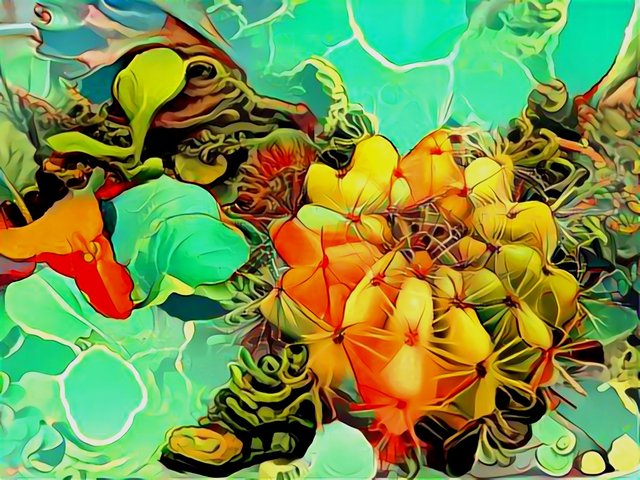
Spiny Eden Number 1
Those turquoise tonalities make a stunning combination with the yellowish-orange palette of the central element.
Once again we have the original Spiny Eden photograph below, with the ball cactus as the central outstanding element in this natural composition.
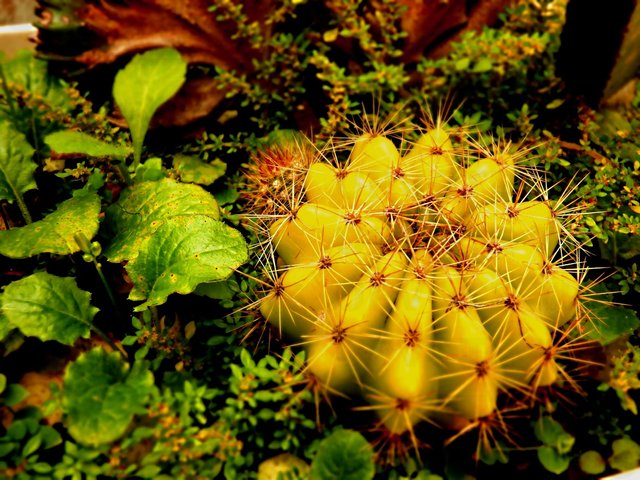
The Spiny Eden photograph
That Spiny Eden photograph was taken with my Olympus SH-25MR camera, and shot at f/4 and 1/80th sec. ISO 100 setting.
Following are the all the other Spiny Eden digital transformations.
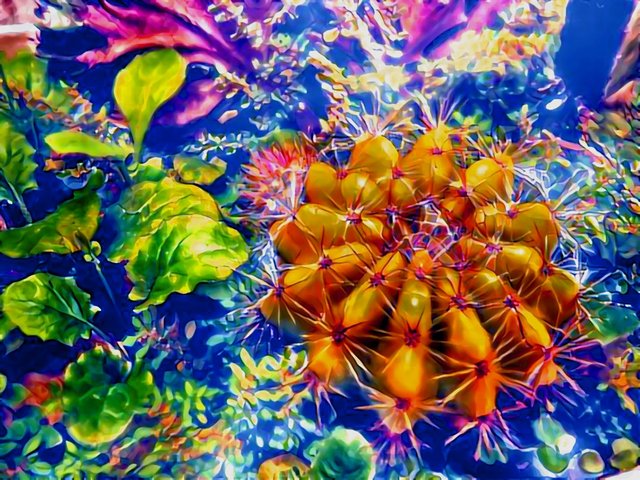
Spiny Eden Number 2
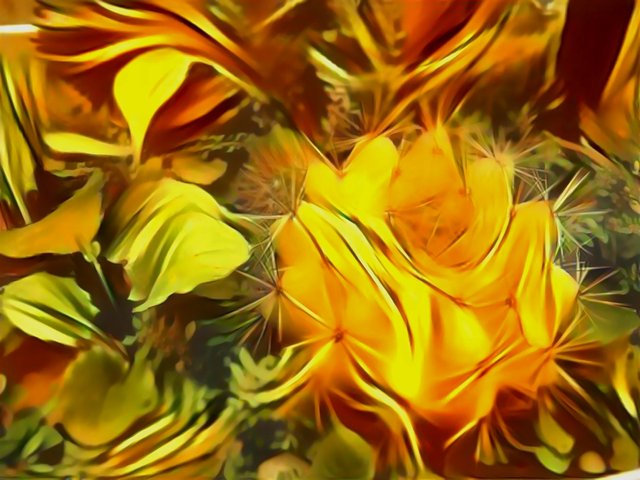
Spiny Eden Number 3
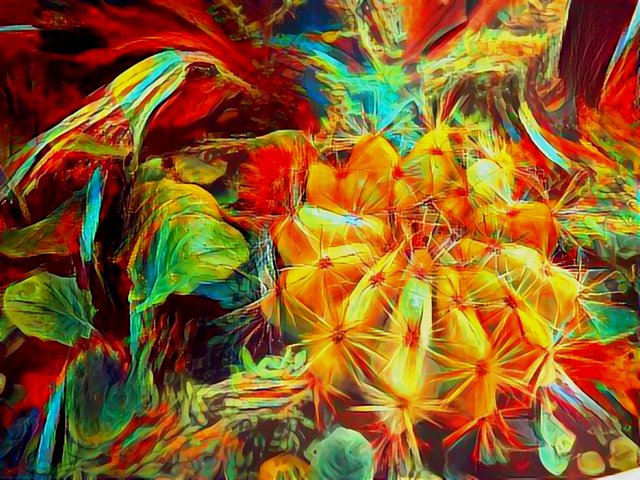
Spiny Eden Number 4
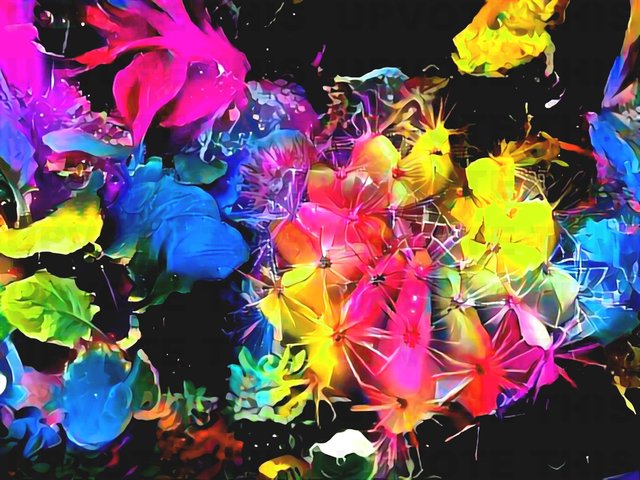
Spiny Eden Number 5
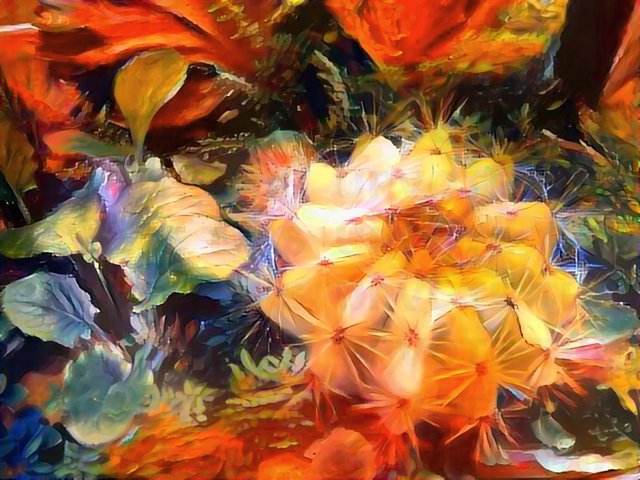
Spiny Eden Number 6
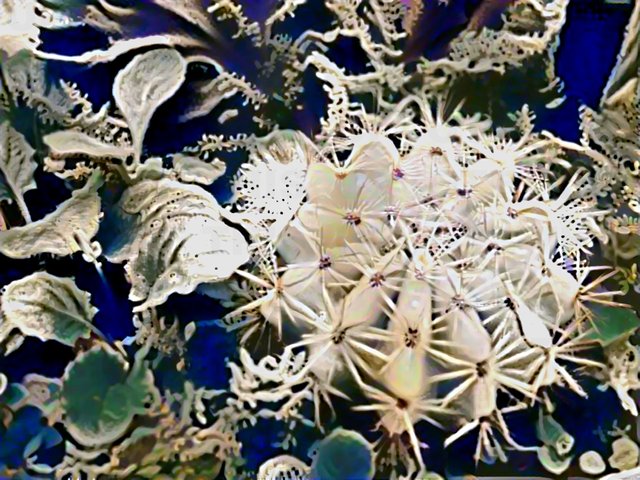
Spiny Eden Number 7
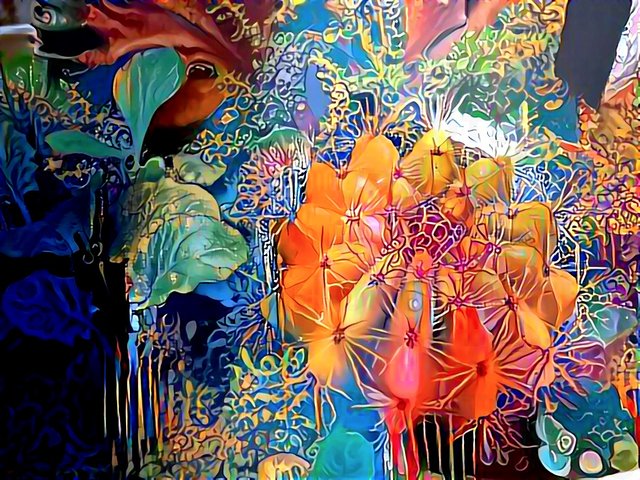
Spiny Eden Number 8
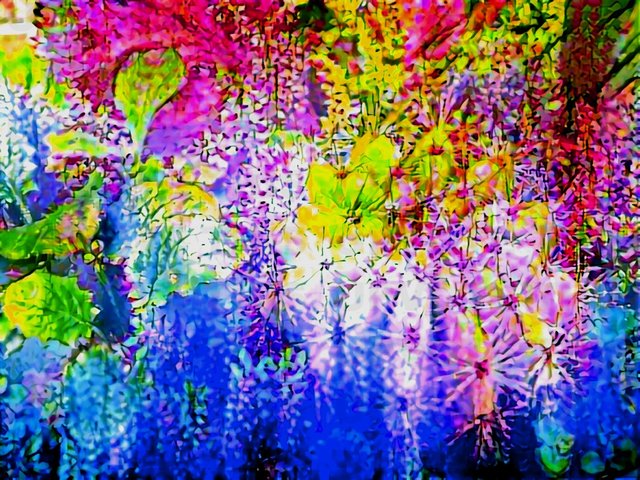
Spiny Eden Number 9
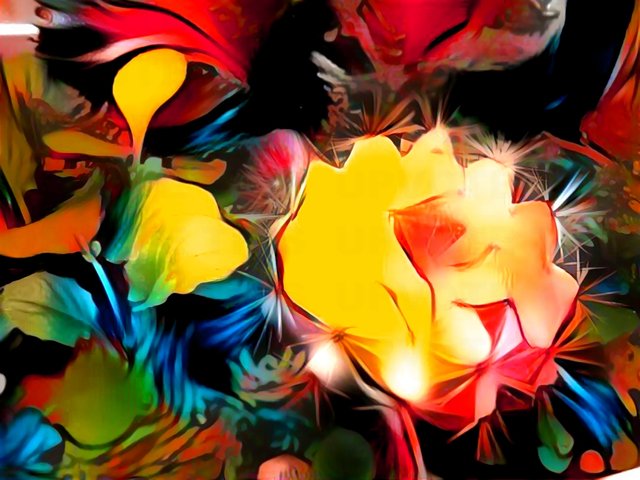
Spiny Eden Number 10
Which one has the coolest color combo for you? Let me know in the comments.
History of Color Photography
“A recurrent question about photography is how much self expression it allows the photographer. There are two standard positions, each corresponding to a different location on photographic skill. The opposition is neatly summed up in Bioy Casares’s novel The Adventures of a Photographer in La Plata (1989). The hero Nicolasito Almanza declares: ‘I am convinced that all of photography depends on the moment we press the release […] I believe that you’re a photographer if you know exactly when to press the release.’ In making this declaration he is responding to the opinion expressed by Mr Gruter, owner of a photographic laboratory: ‘[…] sometimes I wonder if the true work of the photographer doesn’t begin in the dark room, amid the trays and the enlarger.”
― Clive Scott, Spoken Image: Photography and Language
The capture of color in a photograph, although trivial to us nowadays, was a very complex and difficult to achieve matter for quite some time during the initial history of photography, and it is only after the 1970s that color photography is really commonplace. Even though some initial attempts at color photography are tried very soon after the invention of photography in 1839, these early experiments proved to be mostly unsuccessful for several decades.
A couple of these early failed attempts were the chemically complicated "Hillotype" process invented by American Daguerreotypist Levi Hill circa 1850, as well as Edmond Becquerel's process which got better results but he couldn't find a way to prevent colors from fading when exposed to normal light when viewing the taken images.
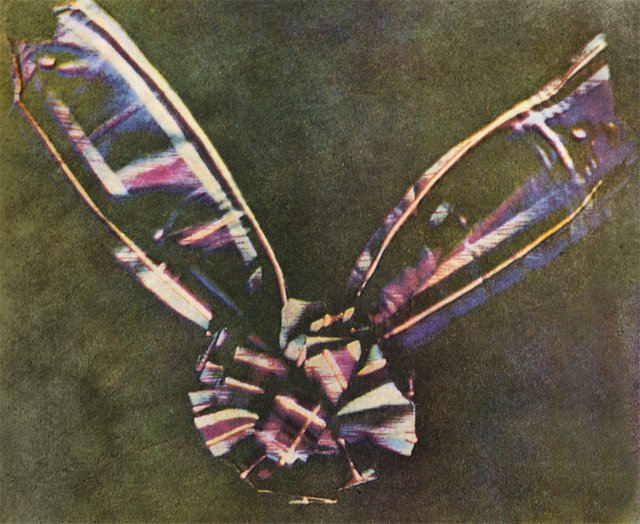
First real color photography of a tartan ribbon. Thomas Sutton, 1861
Image source
The first true color photograph, seen above, was made by the three-color method suggested by James Clerk Maxwell in 1855, and taken in 1861 by Thomas Sutton. The subject is a plaid colored ribbon, usually described as a tartan ribbon.
The first successful photographic three-color prints on paper were pioneered by Louis Ducos du Hauron, who then proceeded to file a comprehensive 1868 French patent that also included basic concepts that most of the color photographic processes subsequently developed also had to use, even though they were independently invented.
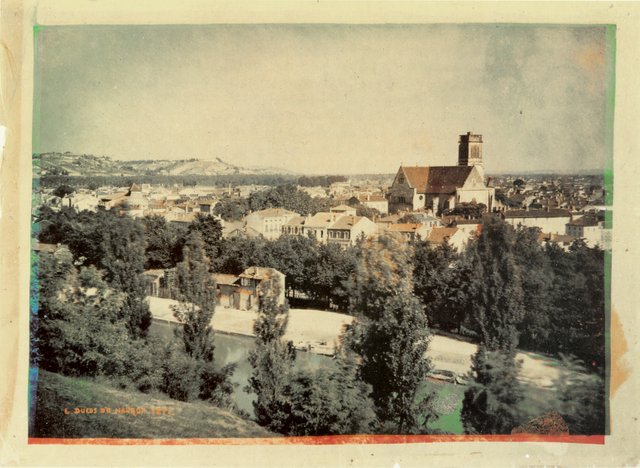
Early color photo of Agen, France, by Louis Ducos du Hauron, 1877.
Image source
Gabriel Lippmann a Franco-Luxembourgish physicist and inventor, received the Nobel Prize in physics for his method of reproducing colors photographically based on the phenomenon of light wave interference. He achieved to produce photographic color plates, but his method could not be printed nor copied, so each image was a unique work, this coupled with the fact that his process was not simple to implement and required long exposure times, limited its success with the general public.
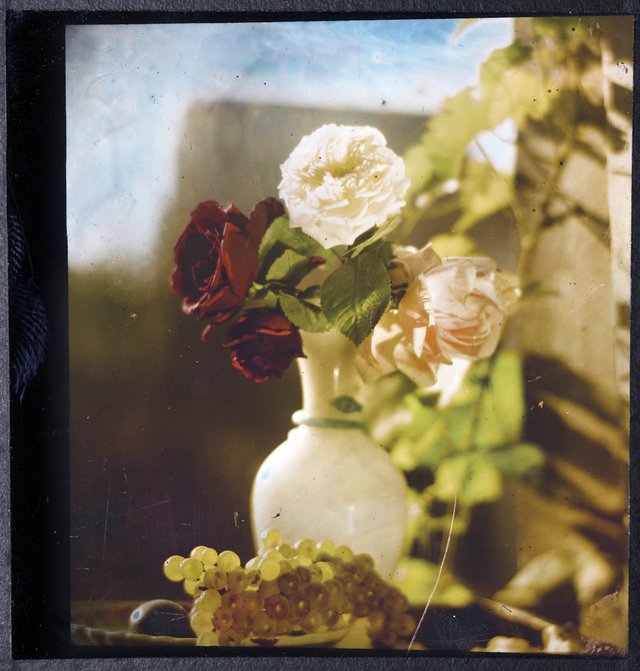
Nature Morte, a color photograph made by Gabriel Lippmann in the 1890s. It contains no pigments or dyes of any kind.
Image source
In the end it was the three color method originally suggested by Scottish physicist James Clerk Maxwell on an 1855 scientific paper the one that has had the greatest success in achieving color photography success. Originally this was achieved by dividing one color image in three different plates exposed to red, blue and green filters, which then were developed and projected one over the other using three light sources filtered by these same three colors for each respective image, achieving one full color projected image.
Eventually cameras were constructed based on this system and using one of these cameras Sergei Mikhailovich Prokudin-Gorskii made his currently acclaimed color photographic series of the Russian Empire just before the 1917 revolution. A couple of these stunning full color examples can be seen below.
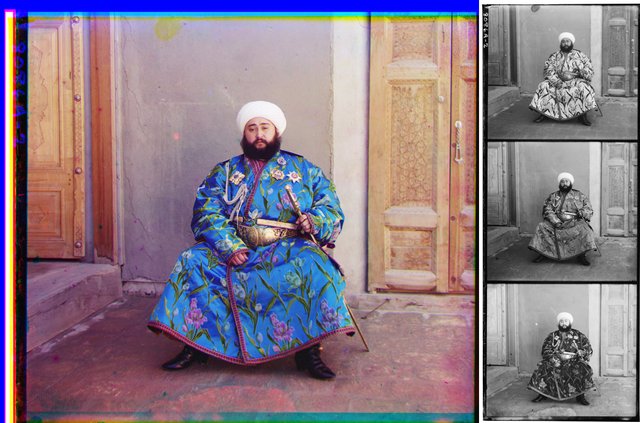
The Emir of Bukhara in a 1911 color photograph by Sergei Mikhailovich Prokudin-Gorskii.
Image source
"A picture of Mohammed Alim Khan (1880-1944), Emir of Bukhara, taken in 1911. This is an early color photograph taken by Sergei Mikhailovich Prokudin-Gorskii as part of his work to document the Russian Empire. Three black-and-white photographs were taken through red, green and blue filters. The three resulting images were projected through similar filters. Combined on the projection screen, they created a full-color image."
Wikimedia
Another sophisticated variant of the three color system camera was patented by Frederic Eugene Ives in 1897, it was driven by a clockwork mechanism that could be adjusted to automatically take each exposure at a varying length of time according to the exact color sensitivity of the emulsion of each plate. This process was combined with stereo images, and so full color stereo pictures could be achieved when seen in a special viewer. On the stereo picture seen below you can achieve the same thing by simply using the cross eyed method.
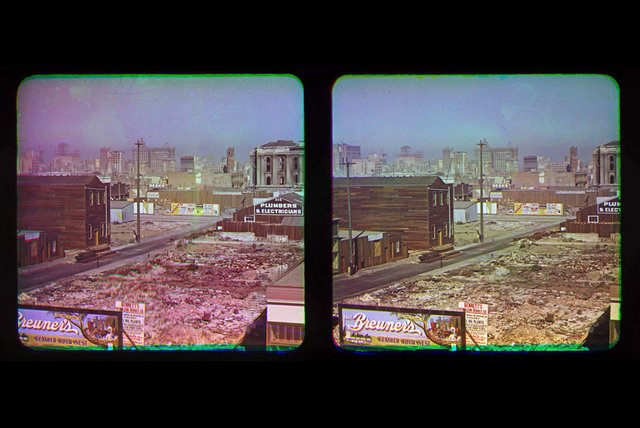
Stereo color photograph of San Francisco after 1906 quake
Image source
"This Oct. 6, 1906 stereo photograph provided by the Smithsonian's National Museum of American History shows a view of earthquake-damaged San Francisco. The San Francisco Chronicle reports that the six images were snapped by color photography pioneer Frederick Eugene Ives several months after the April 1906 'Great Quake.'"
Color Pictures of San Francisco After ’06 Quake Found at the Smithsonian Institution
Another example of the amazing color photography work of Sergey Prokudin-Gorsky documenting the Russian Empire previous to the Russian revolution can be appreciated in this picture of Chinese foreman, Liu Junzhou, on a tea plantation on the Black Sea coast, some time around 1910.
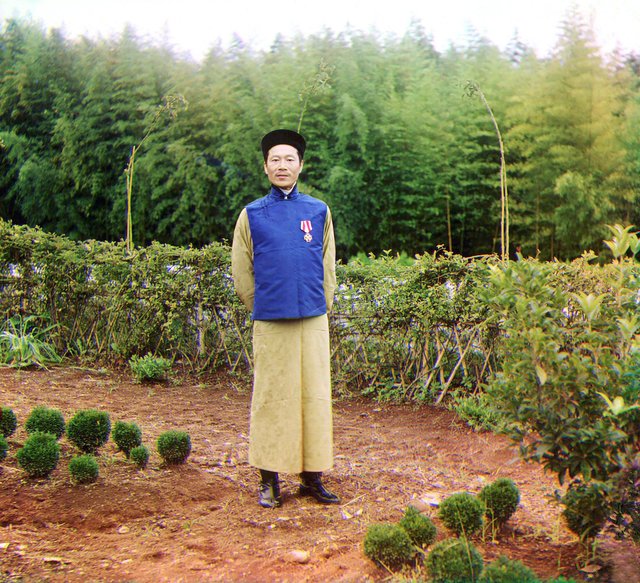
A Chinese foreman on a tea plantation on the Black Sea coast, circa 1910
Image source
For further information on the history of color photography you can refer to the following websites:
“To the complaint, 'There are no people in these photographs,' I respond, There are always two people: the photographer and the viewer.”
― Ansel Adams
#art #photography #life #steemsquad #minnowsunite

Feel free to upvote, follow and check my other posts.
All follows will be followed back.
https://steemit.com/@catsmart
it's amazing, and it's wonderful...!
Thanks, @tanata, what did you like the most?
Hello @catsmart,
It gives us pleasure to inform you that this post have been upvoted by Project Better.
The Mission of Project Better is to reward posts have many votes from Minnows but earn pennies.
Your payout is $0.11 before we vote on your post.
Learn more about the Project Better here!
We hope to see you continuing to post some great stuff on Steemit!
Good luck!
~BETTER~
Cool, thanks. Upvoted your post. Cheers.
cool photos, thanks for sharing! i like the blue and orange, number 2, those are my colors :) also like number 3. upped and followed
And thank you @adventureevryday. Nice to know, those are among my favorites too. Cheers.